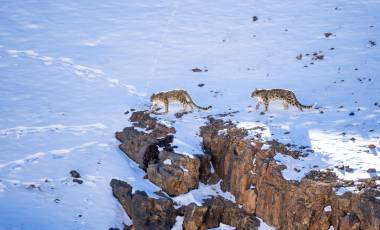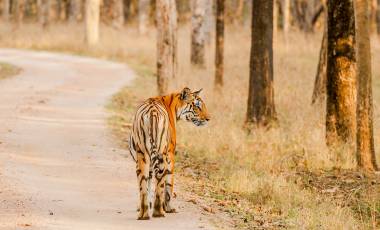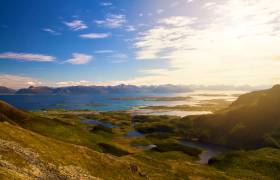After an incredible 38 years of guiding travellers in the Himalaya, Valerie Parkinson’s breadth of local knowledge and keen expertise in the region remains unmatched. Her understanding of the terrain and the endemic wildlife that live in it, make Valerie an expert in the field when it comes to searching for the elusive snow leopard. Working with local spotters and trackers for nearly four decades, she knows exactly how to look for fresh tracks, whether that’s scat, scent markings, scratch marks on trees, or gathering intel from local representatives, which all heighten your chances of spotting this magnificent creature in the wild. So, join our award-winning leader, Valerie, as she shares with us her successful snow leopard sightings on one of her latest trips in February with her group of eight Exodus travellers in tow.
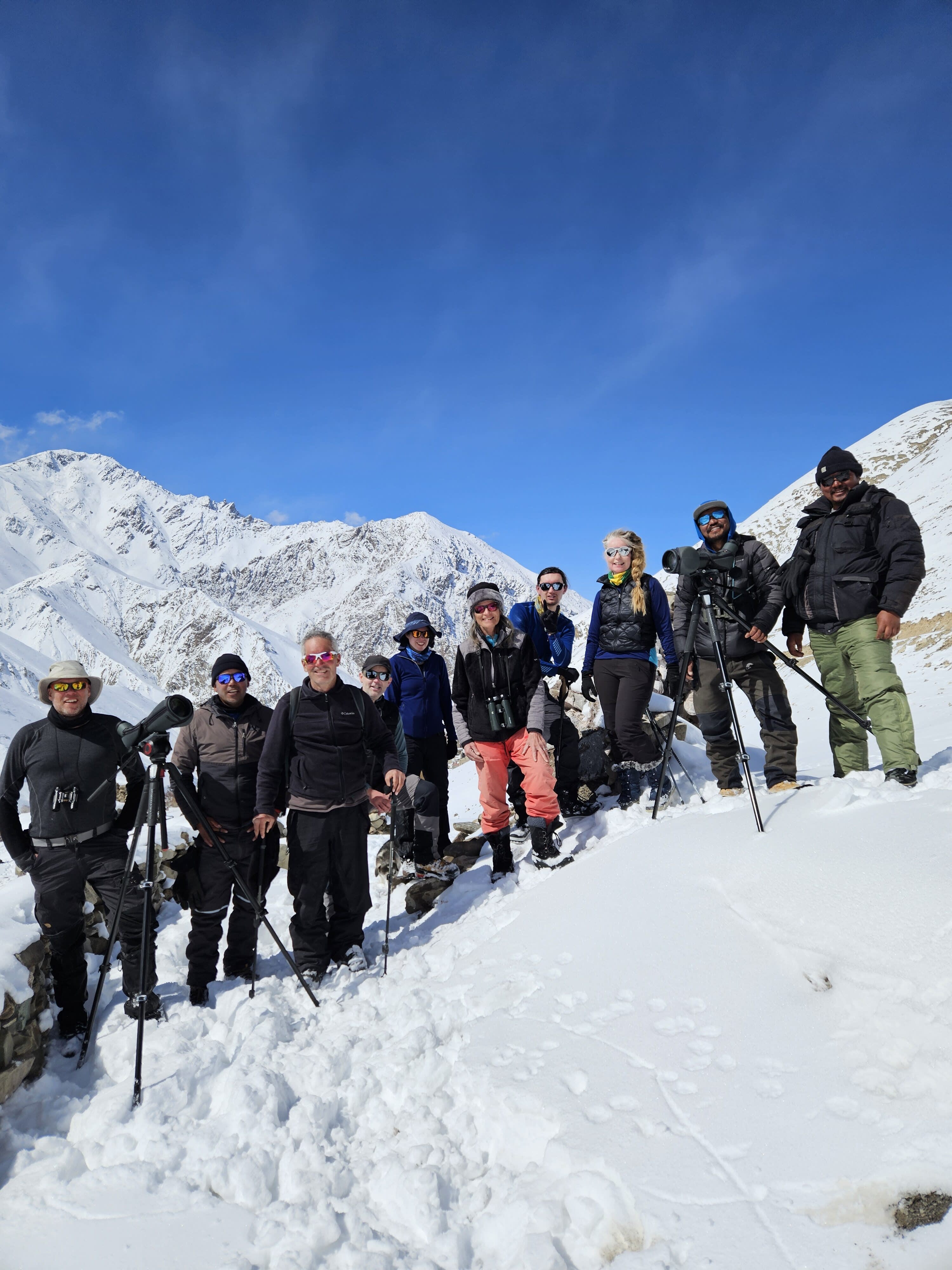
On 17th February, Valerie and her clients arrived in Delhi for a briefing and group meal before heading out early at 3 am the following morning for a spectacular flight over the Himalaya. As soon as the group arrived at the hotel in Leh, Valerie said, “Our local representative greeted us with the exciting news that a snow leopard had been sighted in the Shang Valley eating a cow it had killed. So, after a quick snack, our cars arrived and an hour and a half later, we saw our first snow leopard!” She continued, “Everyone was ecstatic- no one even expected to see a snow leopard and not so close – let alone on the first day in Ladakh. It was less than 100m from us. The only sound you could hear was the sound of the client’s cameras clicking, as we watched this amazing sight unfold until the temperature dropped below zero and the light began to fade.”

Exodus customer, Phill Dixon, liked our Searching for Snow Leopard trip so much that he joined our group in the Himalaya for a second time last month. “Ladakh is a beautiful place, with breathtaking scenery and friendly people who take you into their heart and home.” But aside from the region itself, another big reason why he booked the trip a second time round was because of our expert guide, Valerie Parkinson. “Valerie is simply peerless as an ambassador and guide to Ladakh, she lives and breathes the region and her teams work hard, not just for the clients, but because they genuinely love working with Valerie.” He was keen to mention that, “She has incredible stories from her past mountaineering expeditions and an unflappable demeanour. Valerie works tirelessly to help the people of the region with projects and initiatives and in short, is the only person I’d consider going to Ladakh with on this kind of expedition again. She is quite simply the best and all of our successful sightings were inevitably down to her and her team’s incredible efforts”.

After all of the excitement of their first day out in the Himalaya, Valerie commented, “It’s safe to say everyone slept well that evening”. The next day, her aim was to get everyone in the group acclimatised to the altitude, so she decided to take them to the Stok Festival. “This monastery Festival features the appearance of two oracles – these are people from the village who take on a spirit. We followed them as they made their way around the village and towards the monastery. Here, they blessed the locals and ran around the monastery and the Royal Palace swinging swords and uttering blessings. The day ended with a fire sacrifice and as soon as the fire was lit the snow began.”
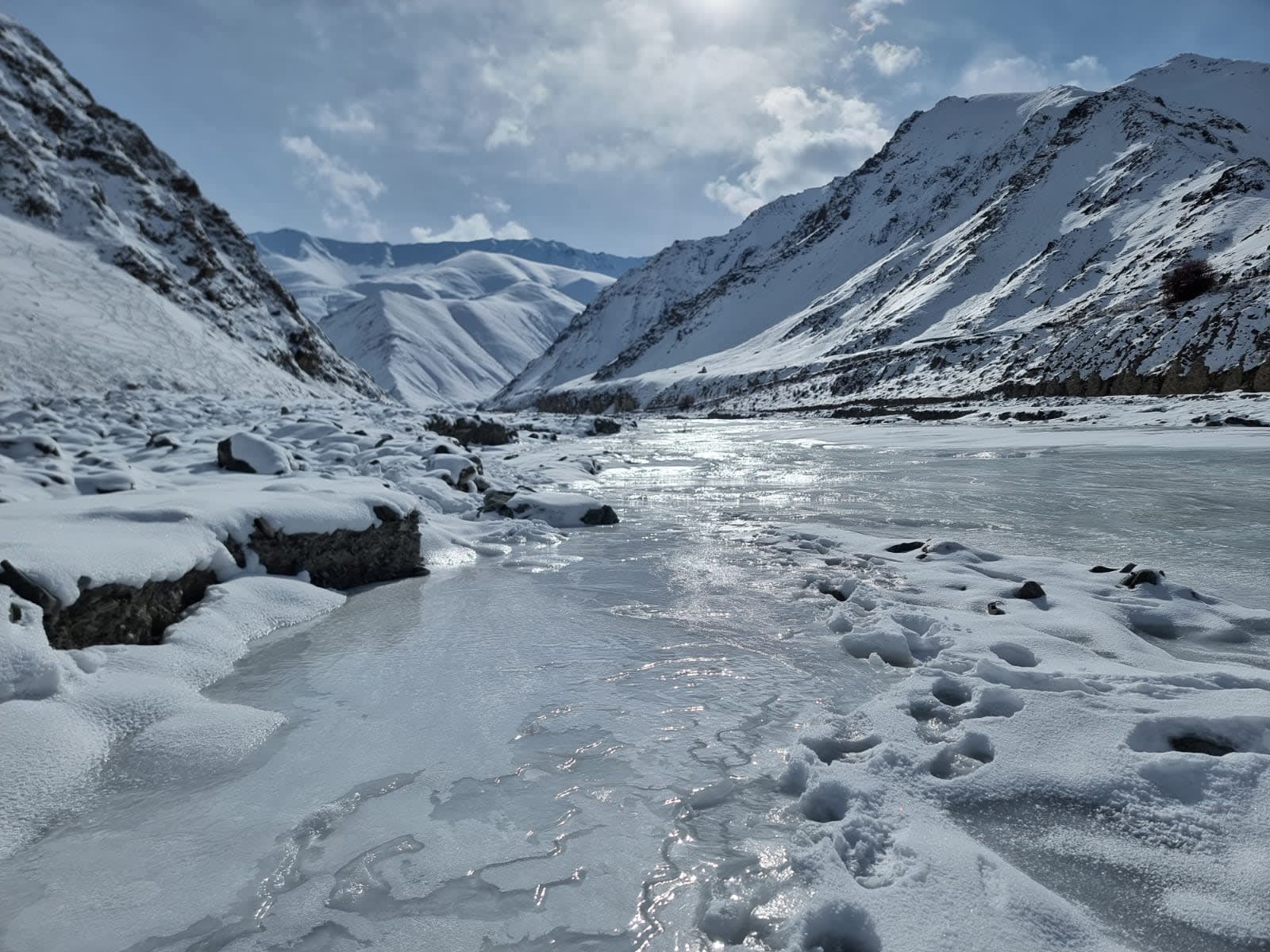
On 20th February, Valerie and the group woke up to 10 inches of fresh snow. Although it was a beautiful sight in the high Himalayas, it caused some problems along the way. “That day we needed to get to our snow leopard camp at Rumbak, in the Hemis National Park. We delayed our departure until after lunch when it was a bit warmer, and our drivers had fitted chains to the tyres. We managed to drive an hour’s walk from camp before we encountered two broken chains and a puncture, due to the snow and ice getting too deep.” She continued, “We made the decision to abandon the cars and walked the last hour or so. Luckily, our camp crew were already there and had set the camp up before our arrival. Donkeys were taken to the cars to bring our luggage and by 7 pm we were sat huddled around the heaters in our dining tent eating a delicious local meal cooked by our chef, Johnny.”
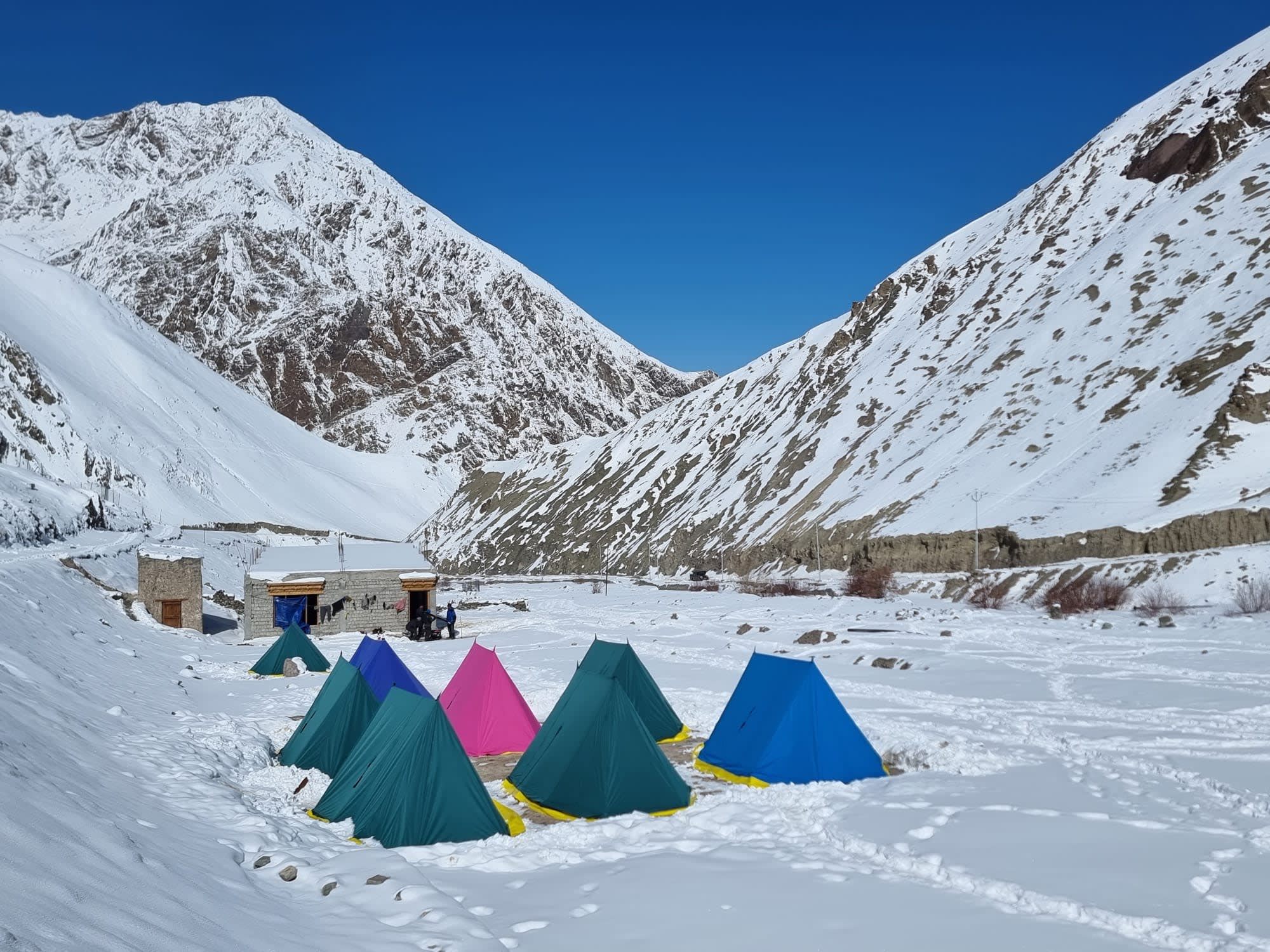
That evening, temperatures dropped to below – 15°C on the first night in the tents, but extra blankets and hot water bottles were given out to the group, which made all the difference. Come morning, Valerie commented that their hardworking “spotters were out above camp before 7 am, when we were brought a welcomed hot drink by our cheery camp helpers. But before you know it breakfast was disrupted by the shout of ‘snow leopard ‘ and we all rushed up to the spotting area above camp to see another magnificent snow leopard walking majestically on the mountains across the valley.”
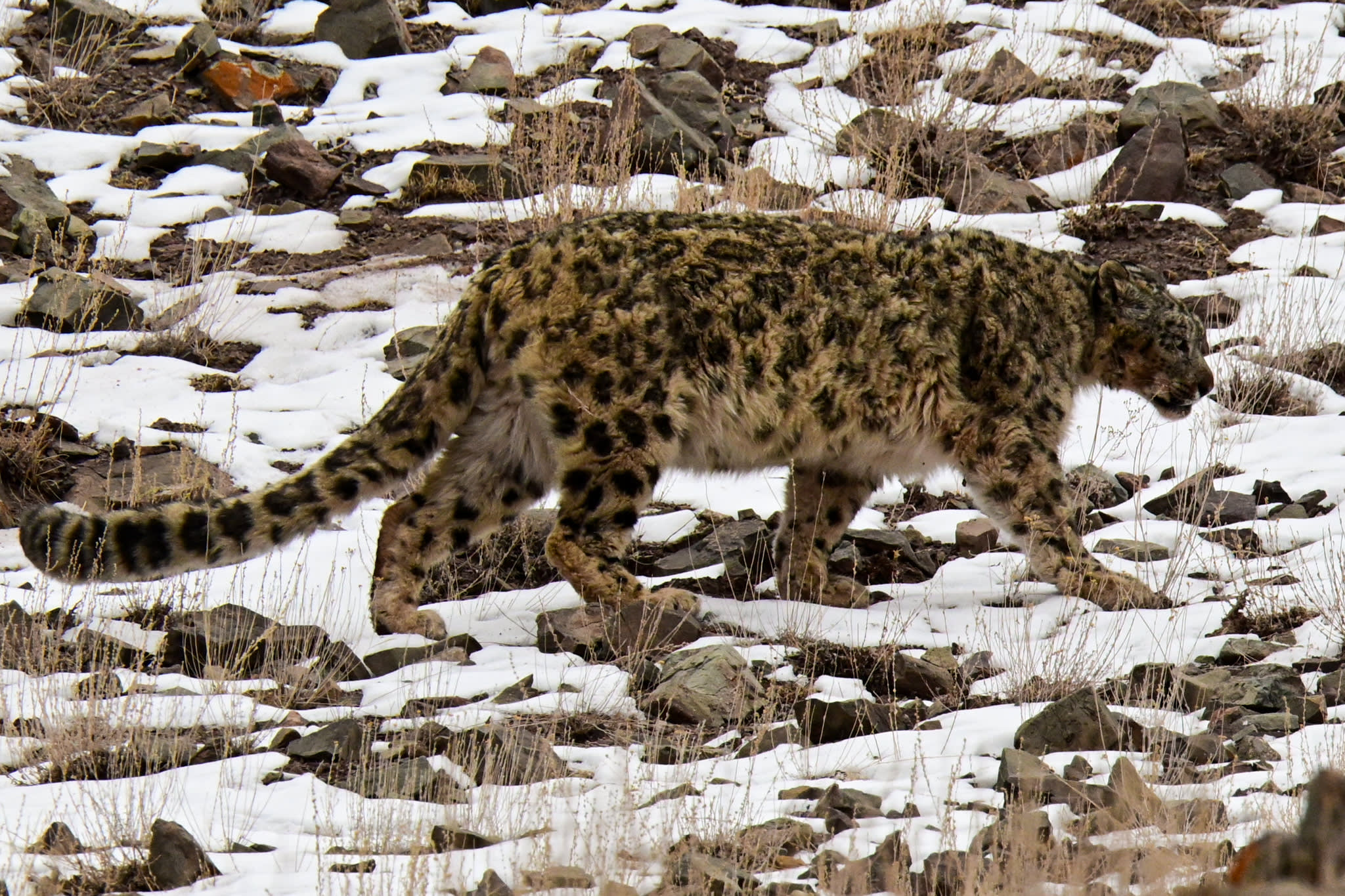
She smiled and said, “We watched all day as the cat sat in the sun and stretched and scrambled amongst the rocks. Midafternoon another boisterous cheer went up in the camp as one of the local spotters saw three more snow leopards- a mother with her two cubs! The excitement was palpable as we watched the family interact as we enjoyed sitting in soaking up the relative warmth of the day – but the wildlife viewing wasn’t over yet. As if things couldn’t get any better one of the Eagle-eyed spotters saw a pack of four wolves further up the valley! There was so much going on, we really didn’t know what to watch for a while. The handmade chips for dinner finished off another perfect day.”
The group were now entering their sixth day of the trip deep in the Himalaya and Valerie quipped it was, “another day, another snow leopard. This morning was clearer which meant a cold night, but our spirits were warmed by the excitement of yet another sighting. We watched for almost the whole day as a lone snow leopard scoured the mountains for a blue sheep. At one point we saw it take off in a thrilling chase of a Himalayan snowcock but was unsuccessful. The group and I left the cat at dusk, where it was still sat patiently on a rock waiting for the lone Blue Sheep to reappear.”

When evening came it was very clear, and the group could see a full moon with stars lighting up the sky. “It was a chilly – 22°C recorded on the porch of the tent that night, but we were rewarded with a sunny day the following morning, so we decided to walk up the valley towards Yurutse – a one-house hamlet”. Valerie mentioned on this particular walk, that the group could see blue sheep scrambling on the cliffs above, while Himalayan Griffin Vultures and Lammergeyer circled overhead. During their picnic lunch in the sun, members of the group could hear wolves howling. “Later in the afternoon, our excellent spotters Jigmet and Wangyal managed to find a pack of wolves for everyone to view just before they disappeared over a hill.”
The following day Valerie and the group made their way up to Rumbak village in the Leh district of Ladakh, situated in Hemis National Park. Before they reached the village, she said they saw “a Tibetan fox in one of the caves opposite the spotting area – some were lucky enough to see her stretch and wander off for a day of foraging in the high plateaus.” When they arrived at Rumbak, the group met their friendly hostesses and settled in for the afternoon. “That evening, we all enjoyed a “bring and share supper”. This is where everyone contributes to making dinner, so some of the clients helped me make traditional momos and chutagi from scratch, while the others watched the local ladies as they needled felt snow leopards which they sell to tourists, to keep a consistent flow of income during the low seasons. You could tell everyone appreciated the extra warmth of the homestay as each room came with small lit stoves.”
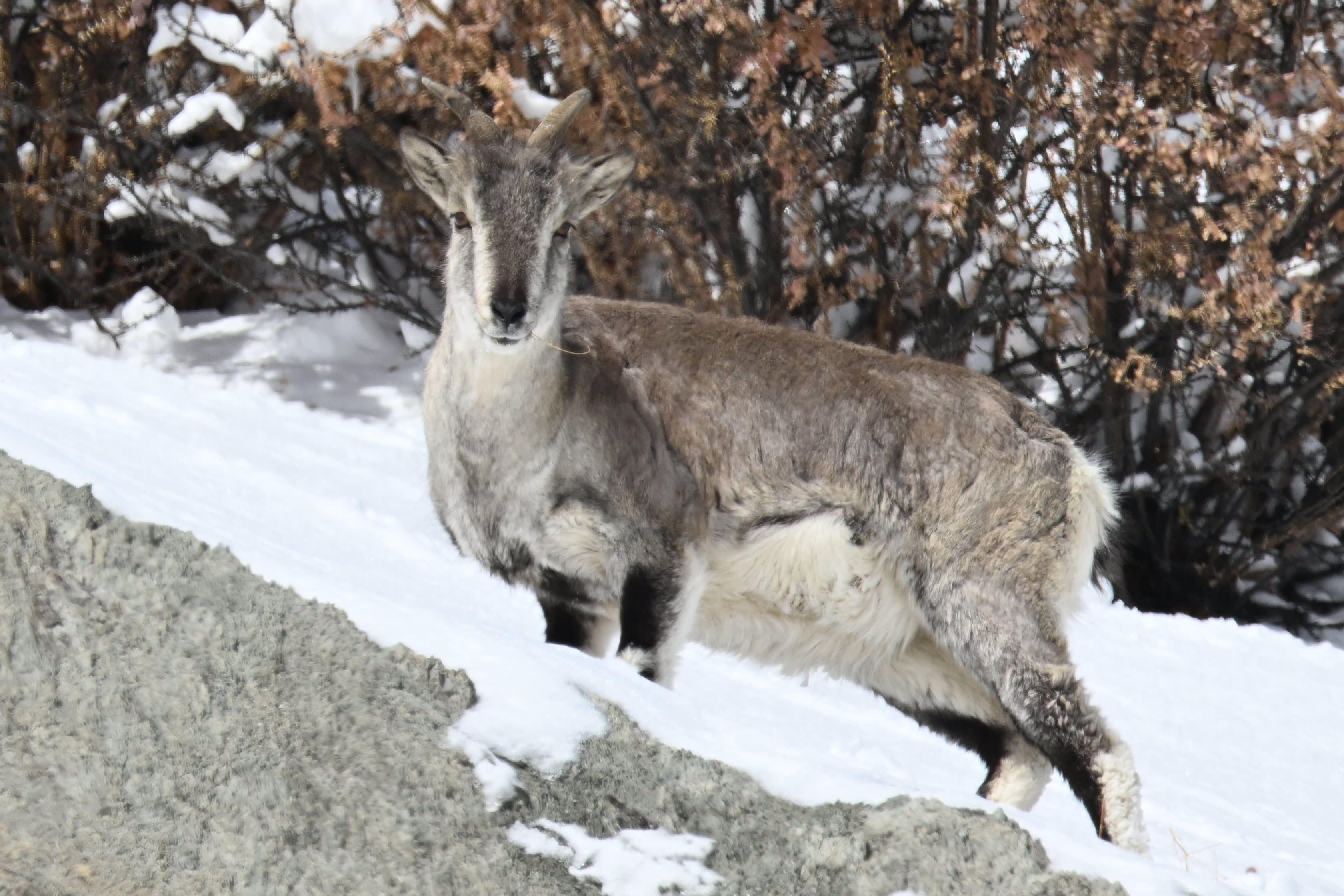
And just like that, it came to their last day in the mountains, where Valerie said they had another beautifully sunny day – with sightings of blue sheep, tahr, woolly hare, Lammergeyers and Himalayan griffin vultures. She said, “For our last dinner, Johnny created the most delicious chocolate cake for dessert that he baked on a small gas stove in a tent!” The following day, the group packed their bags and made their descent down the valley to Jinchen, where the group made the transfer back to Leh.
On the last day in Leh, the group got the opportunity to visit the 17th Century Shey monastery and palace, known for the statue of Shakyamuni Buddha that’s constructed with copper and gilded gold. They also explored the Thiksey Monastery, which is noted for its remarkable resemblance to the Potala Palace in Lhasa, Tibet. Afterwards, the group enjoyed an afternoon walking around the bazaar to pick up some last-minute souvenirs and mementoes of the trip.
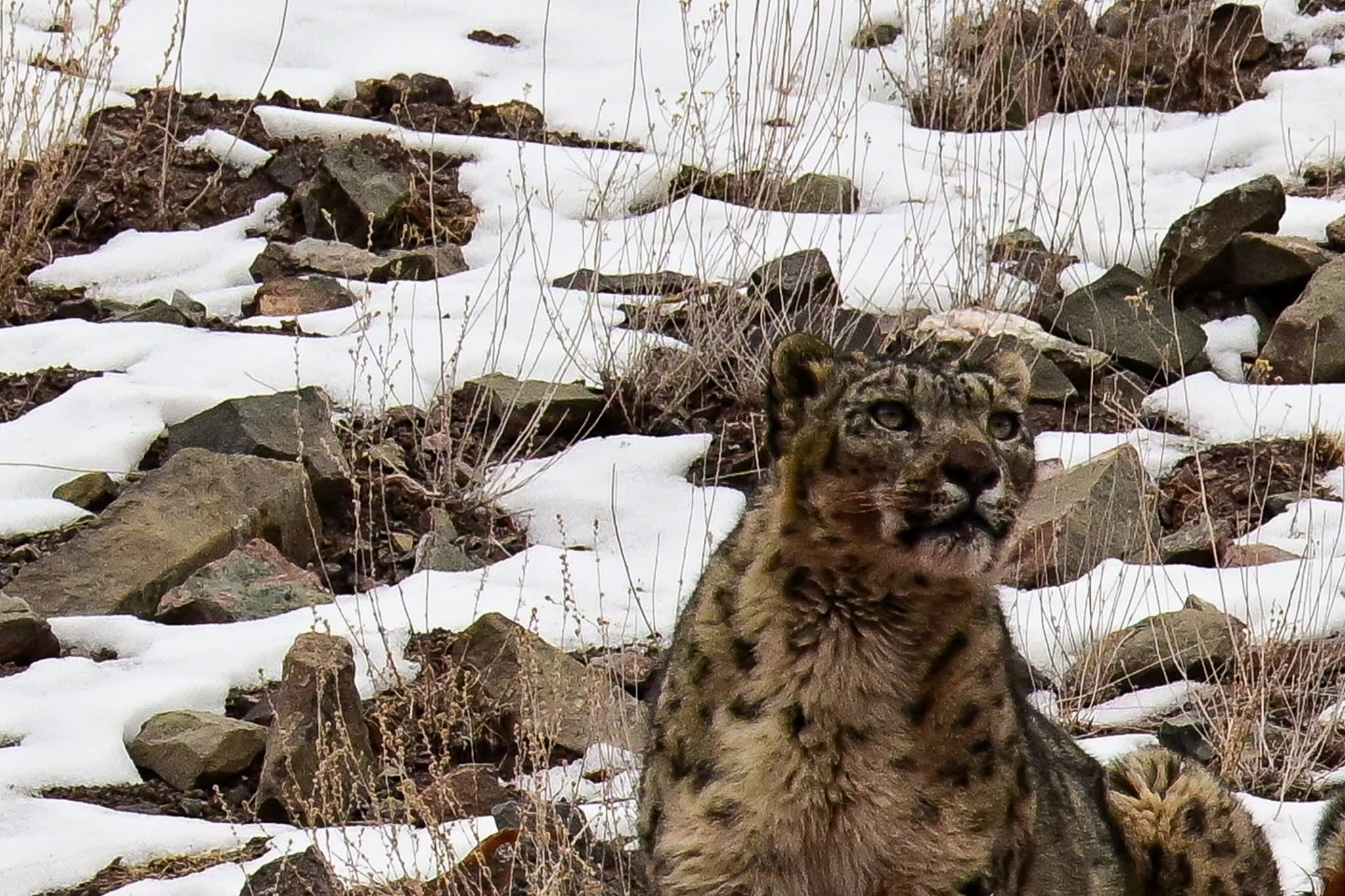
When asked to round up his trip, Exodus customer, Phill Dixon, said if you have the chance to book this trip, just do it. “The trip was out of this world from the first glimpse of a snow leopard to witnessing mother and cubs hunting. All the while the team were striving to give you the best experience possible.”
Some fresh snow that landed on their final evening in Leh which made the afternoon flight the following day from Delhi even more spectacular, Valerie said. “It was a magnificent flight over the Himalaya”. The final day of the trip is usually kept as a spare day in case of unforeseen delays with flights in from Leh, so Valerie organised a fantastic walking tour with Street Connections. “This organisation is affiliated with the Salaam Balaak Trust- an NGO that helps street children. It has several homes in Delhi and provides life-changing education and training for younger children and teenagers. Some of the older children are trained as sightseeing guides and give tours around the streets of Delhi. We had a wonderful walking tour in Old Delhi on our last day which covered the spice market and Chandni Chowk, one of the oldest and biggest markets in the city.” Valerie said, “The hustle and bustle, smells, vibrant colours and noise was certainly a stark contrast to the quiet mountains of Ladakh, but it made for a fascinating end to our trip in the Himalaya.”
So, if you’re keen to follow in Valerie’s footsteps and track one of the world’s most elusive cats, find out more about our trip here.
Photos courtesy of Phill Dixon

